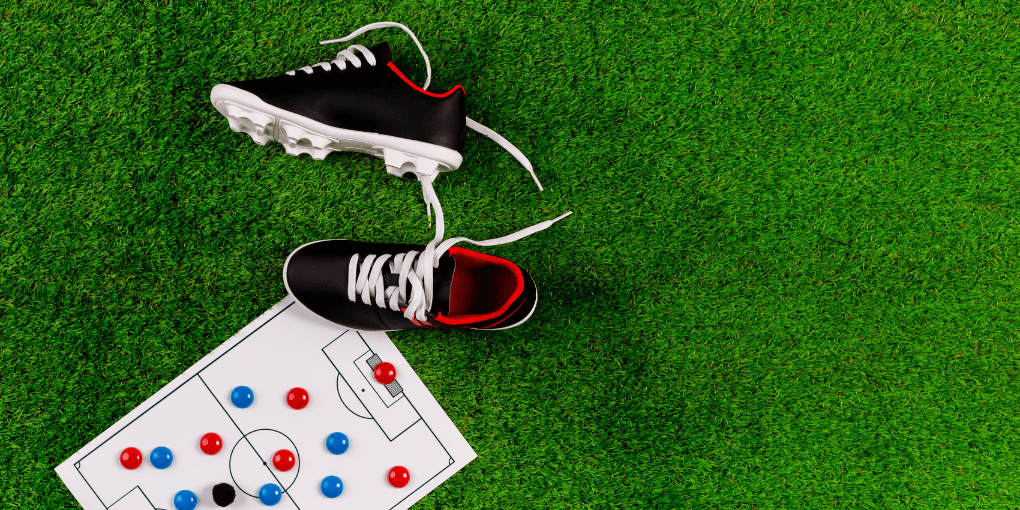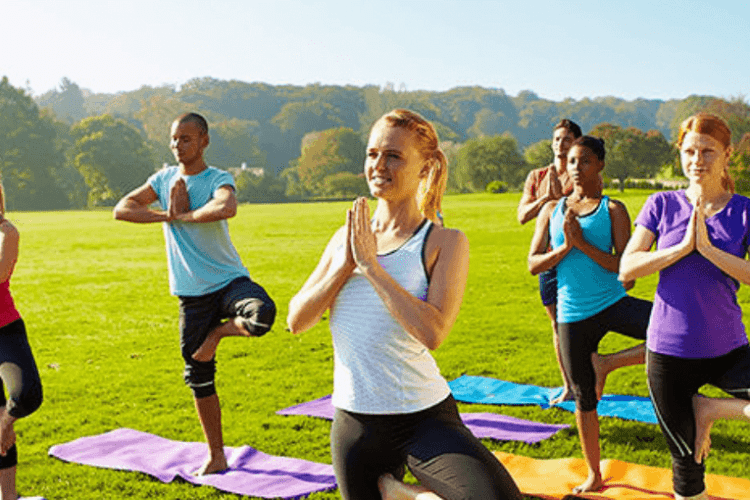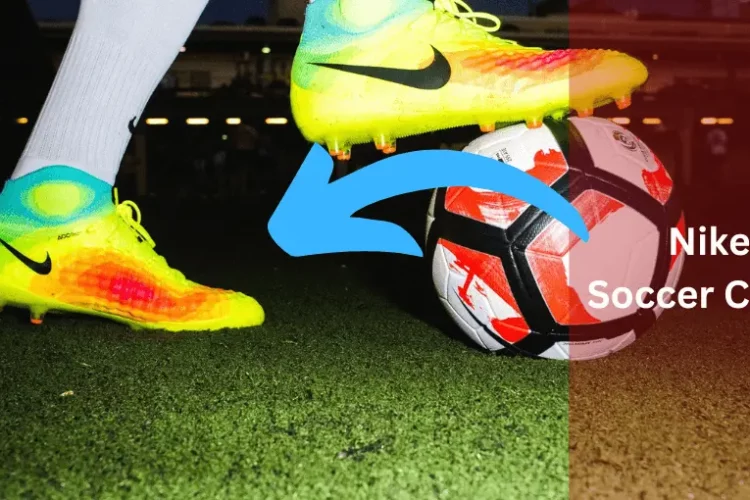Exploring the Materials Science Behind Soccer Cleats
Did you know that wearing the right cleats can improve your speed by up to 25%? That’s right.
It’s not only about natural talent, it’s also about the science behind soccer cleats!
Imagine you’re running with the ball on the field, going around defenders like a champ. Then, you turn fast and leave the other player behind. Ever wonder how you can do those fast moves? It’s because of the biomechanics built into your soccer cleats.

Once the greatest Pelé said that give a player the right pair of shoes, and he can conquer the world. He’s right!
A study published in Popular Mechanics shows that players wearing high-performance cleats ran faster and made better turns compared to those wearing regular ones.
So, in this blog post, we’re diving deep into the science behind these cleats. Are you ready to explore the fascinating world of soccer cleats with me? Let’s begin!
Importance of Understanding Biomechanics
If you want to know the science behind soccer cleats, you should also know about biomechanics.
Biomechanics is about how your body moves and how soccer cleats can make a difference. By understanding these, you can become unstoppable on the soccer field.
What is Biomechanics?
Biomechanics helps you understand how your body moves when you play soccer. It’s all about studying the muscles, bones, and joints in your body and how they work together to kick, run, and jump.
How Do Biomechanics Apply to Soccer?
When you kick a ball or run on the field, your body moves in special ways that biomechanics helps you understand. It also helps you figure out the best techniques for kicking the ball.
Role of Footwear in Biomechanics
Your soccer cleats are like secret weapons that work with your body to help you play better. These cleats give you a good grip on the field and support your feet when you make quick movements.
How Do Soccer Cleats Help with Biomechanics?
Cleats have special studs on the bottom that grip the ground. It helps you stop and turn quickly without slipping. They also have cushioning inside to protect your feet and help you jump higher.
Why is Understanding Biomechanics Important?
Knowing how your body moves helps you play smarter and avoid getting hurt. By understanding this, you can improve your skills and become a better soccer player.
So, next time you wear your soccer cleats, pay attention to how they feel and the impact they have on your game.
Know About the Components of Soccer Cleats
Let’s explore the components of soccer cleats together:
- Upper Materials: The top part of soccer cleats is known as the “upper.” made from different materials, like leather, synthetic materials, or mesh. It helps protect your feet while playing.
- Midsole Construction: Inside the cleats, there’s a layer called the midsole. It provides cushioning and support for your feet. Cleats with foam cushioning help absorb impact when you run and jump. It also reduces strain on your feet and legs. Some cleats have special technologies in the midsole to prevent injuries.
- Outsole Design: The bottom part of soccer shoes is called the outsole, and it’s where the studs or spikes are. Stud patterns change based on the field you play on. The science behind soccer cleats has created different cleat designs for firm ground, turf, or indoor surfaces. Cleats with a flexible outsole give you better control and stability.
- Insole: The insole is the cushioning on the inside of the soccer cleats. It provides you with comfort and support.
- Lacing Systems: How you lace up your cleats can affect how they fit and feel on your feet. Traditional laces give you more control over how tight or loose your cleats are. Some cleats have innovative lacing systems. For example, quick-pull or laceless designs are easy on and off.
- Toe Box: The toe box is the area at the front of the soccer cleats, where our toes go. It usually protects your toes and provides durability when you kick the ball.
- Heel Counter: The heel counter is the part of the soccer cleats that supports and stabilizes your heels. It helps prevent your feet from sliding inside the cleats. It also gives you more control and prevents discomfort.
Biomechanical Considerations in Cleat Design
Understanding how biomechanical considerations influence cleat design is crucial for you.
By choosing the right cleat, you can improve your performance on the field. Cleat designers consider these biomechanical aspects when creating shoes for better performance.
- Traction: Cleat design considers traction to help you grip the ground better. Different stud patterns and shapes provide you with better stability. It also prevents slipping while running or making quick turns.
- Stability: Cleat provides stability to prevent your feet from rolling or twisting during movements. This helps you maintain balance and reduce the risk of injury.
- Flexibility: Cleats are designed to have the right amount of flexibility. This allows your feet to move naturally and bend comfortably. So, you can run, jump, or kick your soccer ball easily.
- Lightweight: These cleats are lightweight. Lighter cleats enhance your speed on the field. It allows you to move faster and more comfortably.
- Cushioning: The cleat design takes the cushioning inside the shoes into consideration. It provides comfort and absorbs impact while playing. Good cushioning reduces the stress on your feet and joints.
- Support: The cleat design provides support for your feet and ankles. This keeps you from moving the wrong way and makes you stable during sudden action in soccer.
- Breathability: Cleat design includes features that allow airflow and ventilation. This helps keep your feet cool, dry, and comfortable during the game by reducing sweat and odor.
- Durability: Designers create cleats to be durable and meet the demands of soccer. This ensures that the cleats last longer, even with constant use.
Science Behind Soccer Cleats in Performance Enhancement
Let’s explore the science behind soccer cleats together:
Grip and Traction
Cleats are designed to provide better traction on the field. So, you don’t slip when you run or make quick movements. The studs or spikes on the bottom of cleats help you dig into the ground.
It gives you traction to push off and change direction. Cleats with longer studs are better for wet or muddy fields, while shorter studs work well on dry grass.
Speed and Agility
Cleats play a big role in helping you make quick turns and move on the field. The science behind soccer cleats makes these cleats lightweight for you.
It allows you to run faster and change directions easily. So, it enhances your speed and agility during the game.
Ball Control
Cleat design influences your ability to control the soccer ball. Cleats with a firm upper part provide a better touch and feel when kicking, passing, or dribbling the ball.
Power and Accuracy
The design of soccer cleats can help you generate more power and accuracy in your shots. The stability and support provided by cleats help us maintain balance.
Cleats with strong construction help you kick the ball harder and more accurately.
Comfort and Injury Prevention
Soccer cleats that are comfortable to wear can help you focus on the game.
Cleats with cushioned insoles and padded collars make your feet feel better and take away pressure during long games. They also provide support and stability to prevent foot and ankle injuries.
Fit and Customization
Cleats that fit properly can enhance your performance. They allow for better control, stop your feet from sliding, and help your feet move naturally.
Customization options, such as insoles and lacing, make the shoes fit even better for you.
Psychological Impact of Soccer Cleats
A study published in ResearchGate shows that soccer cleats not only impact your physical performance but also hold psychological significance. The science behind soccer cleats has these impacts on you:
- Confidence Boost: Wearing the right pair of soccer cleats can boost your confidence on the field. When you feel comfortable and secure in your cleats, you believe in yourself more.
- Performance Expectations: Wearing high-quality soccer cleats creates positive expectations for performance. If you wear top-notch cleats, it will make you play better.
- Identity: Soccer cleats can contribute to your sense of team identity. When you wear cleats that match your team’s colors or logos, it promotes a feeling of unity and belonging.
- Motivation: Exciting new soccer cleats can motivate you to perform your best. When you have cleats that you like, it can boost your motivation and help you succeed even more.
- Mental Focus: Wearing comfortable and well-fitting cleats allows you to focus on the game. When your cleats don’t cause distractions, you can concentrate better on your gameplay.
- Emotional Connection: Soccer cleats can create an emotional connection with the sport. When you’ve got shoes you really like, it makes you feel closer to the game. This makes you even more excited and happy when you play.
- Sense of Pride: Wearing your cleats can make you feel proud. When you have shoes you’re proud of, it makes you feel better about yourself and makes you love soccer even more.
Future Trends in Soccer Cleat Technology
Let’s explore the evolving science behind soccer cleats to predict its future trends:
Customization Options
In the future, cleats may offer even more customization options to fit your unique preferences and playing style. You may be able to personalize your cleats.
You can choose custom colors and patterns, and you can even add your names or numbers.
Customizable features might let you change how your cleats fit and feel. So, you can adjust the cushioning, support, and grip to what you like.
Smart Technology Integration
Soccer cleats of the future may use advanced smart technology. They would provide real-time feedback and analysis during games and practices.
Sensors inside could keep track of how fast you run, how far you go, and even how well you hit the ball.
You might get quick feedback on how you’re doing from phone apps or gadgets you wear.
This can help you see where you need to get better and keep track of how you’re doing over time.
Energy-Return Technology
In the future, cleats could have special technology that saves and gives back energy when you move.
This could help you be faster, stronger, and better at playing.
Sustainable and Eco-friendly Materials
As people worry more about the environment, cleats in the future might be made from materials that are better for the Earth.
Manufacturers may explore alternative materials, like recycled.
Conclusion
In conclusion, the science behind soccer cleats plays a crucial role in enhancing your performance on the field.
Science guides every part of cleat design. It makes sure you play your best by studying how bodies move and personalizing your gear.
By understanding how cleats work and choosing the right pair for your needs, you can improve your speed, agility, and comfort. This also reduces the risk of injuries.
So, by applying this knowledge, you can choose the right cleats and step onto the field with confidence.
FAQs
They wear cleats to improve their performance on the field. Cleats help them to run faster, turn quickly, and kick the ball more accurately.
To prevent blisters, make sure your cleats fit properly and aren't too tight or too loose. You also need to keep your feet dry and clean to keep them healthy.
It creates cleats with high-tech features like light materials, smart stud placement, and cushioning. These features help you run fast, move well, and control the ball, so you can play your best.
It's a good idea to replace your cleats when they start to show signs of wear and tear.
On average, replace your cleats every 6 to 12 months. The frequency depends on how often you play and how well you take care of them.


